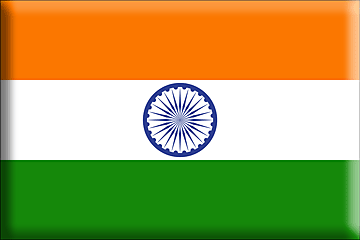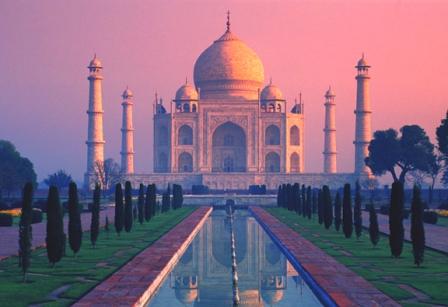 Introduction:
Introduction:India, officially the Republic of India a country in South Asia.The seventh country's largest, most populous and second most populous
Four of the major world religions, Hinduism, Buddhism,Jainism and elsijismo originated here Gradually annexed by the British Company of the West Indies since the early eighteenth century and colonizadapor the UK since the mid-nineteenth century, India became an independent nation in 1947.India is a republic composed of 28 states and seven union territories with a parliamentary system dedemocracia. It has the 12th largest economy in the world where market exchange rates, in addition to the fourth power adquisitivomás largest in the world. 1991 Economic reforms have transformed it into one of the fastest growing economies, however, still suffers from problems such as high levels of poverty, illiteracy, pandemics and malnutrition. In addition to hosting a pluralistic, multilingual ymultiétnica, India is also home to a diversity of flora and fauna in a variety of protected habitats.
1. Andhra Pradesh
2. Arunachal Pradesh
3. Assam
4. Bihar
5. Chhattisgarh
6. Go
8. Hariana
9. Himachal Pradesh

10. Jammu and Kashmir
11. Jharkhand12. Karnataka
13. Kerala
14. Madhya Pradesh
15. Maharastra
16. Manipur
17. Meghalaya
19. Nagaland
20. Orissa
21. Punjab
22. Rajasthan
24. Tamil Nadu
25. Tripura
26. Uttar Pradesh
27. Uttaranchal28. West Bengal

India is the largest democracy in the world. During much of the country's independent life, the federal government h
Geography:
The geological processes that defined the present geographic

Is home to 7.6% of all mammals, 12.6% of all birds, 6.2% of all reptiles, 4.4% of all amphibians, 11.7% of all fish and 6% of flowering plants in the existing mundo.92 Many ecoregions of the country are extremely high levels of endemism, in general, 33% of


With an estimated population of over 1,160 million people, 6 India is the second most populous country in the world. In the last fifty years have seen rapid urban population growth due in large part to medical advances and massive increase in agricultural productivity through the green revolution.
Religion:
The architecture of India also varies greatly at the regional level also contains influences of Buddhist, Muslim and European. The stupa lapagoda outdoors, the gopuram and Sikh are the most common types of architecture in India. Famous buildings in India like the Taj Mahal, DELTUR encourage development in the country.

Officially, India's national sport is hockey césped.Sin But the most popular sport in the country is cricket.









